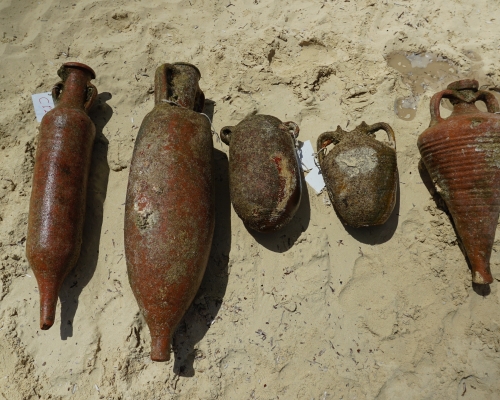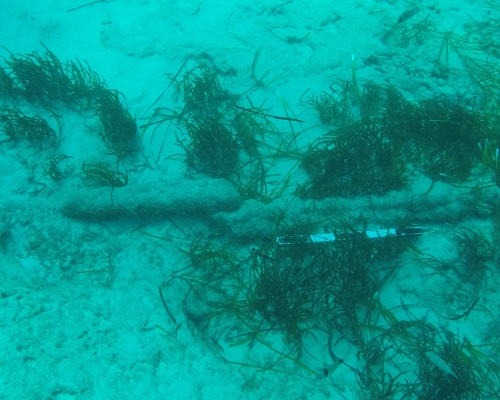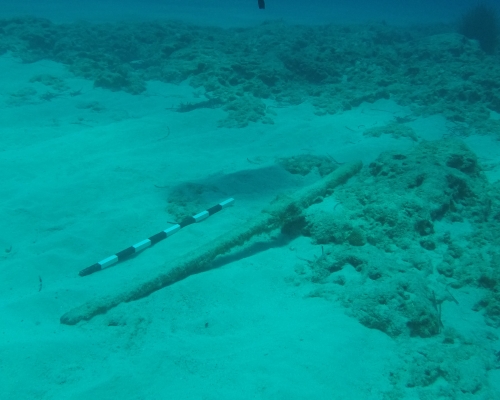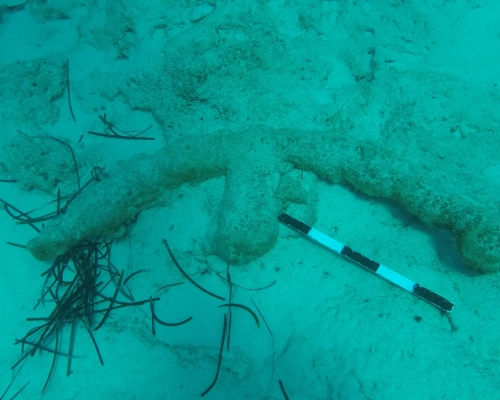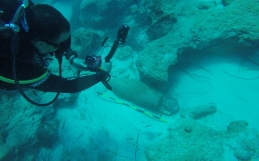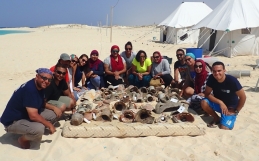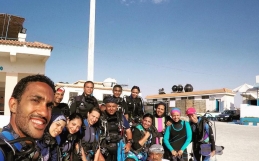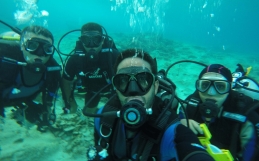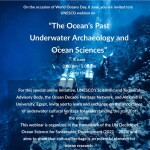Over the past three seasons, desk-based research and fieldwork was carried out for the site of Ladamantia (the western part of Marsa Bagoush)
Ancient text from the Early Roman Period mentions that the site was a safe harbour that can be accessed in any wind, unlike most anchorages on the NW coast of Egypt. It was also mentioned that the site has access to freshwater cisterns.
Accordingly, fieldwork was carried out over three seasons. A total of 208 dives were conducted at depths between 5m to 18m using SCUBA.
The western part of Ladamantia Bay was divided into sections using SMBs and each section was surveyed thoroughly by teams of divers. Once archaeological material was located, an SMB was deployed to the surface so that the location was marked by GPS on the support vessel.
The recorded archaeological remains were divided into several types:
1- Concentrations of ceramic clusters (including broken amphora and coarse ware),
2- Individual intact amphorae
3- Anchors of different forms and dates.
Hence, each site was mapped and recorded using photogrammetry.
On the other hand, it was requested by the Ministry of Tourism and Antiquities that we raise one intact amphora from each type discovered, to be exhibited at the Alexandria Graeco-Roman Museum. Accordingly, seven amphorae from seven different types were excavated, raised and transported to Alexandria for conservation.
The excavated amphora types are:
1- AE4 Early Roman amphora (Egypt)
2- AE3 Early Roman amphora (Egypt)
3- LR1 Late Roman amphora (Cyprus)
4- LR4 Late Roman amphora (Ghaza)
5- LR5/6 Late Roman amphora (Ghaza)
6- North African Cylindrical 4th-5th AD (Tunisia)
7- Agora K 109 – 3rd-4th AD (North Africa)
Based on the research carried out and on the distribution of the discovered archaeological remains, it is expected that more remains are found in the middle of the bay and in deeper water outside the bay.
Moreover, 28 anchors were recorded on the site. They varied between stone anchors, lead stock anchors and iron anchors, mostly dating to the Roman period, several of them are mostly intact. Each anchor was then marked, recorded and photographed.

